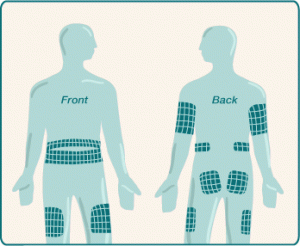 It’s been a long time since I was pregnant, but it’s an experience we never forget. I have a Facebook friend who is currently pregnant. She posted some questions about pregnancy and type 1 diabetes that I wanted to share here, because it’s likely that other women are wondering about the same things.
It’s been a long time since I was pregnant, but it’s an experience we never forget. I have a Facebook friend who is currently pregnant. She posted some questions about pregnancy and type 1 diabetes that I wanted to share here, because it’s likely that other women are wondering about the same things.
Q1- “so it will probably come early right because I heard they don’t let type 1 moms go past 38 weeks.”
My answer: More and more OBs are comfortable having moms with diabetes go to 40 weeks. However, if there are any health issues or even concerns (high blood pressure, large baby, etc.), they will very likely want to induce early, typically at 38 weeks. Many women deliver on their own a little earlier than 40 weeks. I live in a mountain town, three hours away from the nearest major health center, and my OB and I decided to do an amniocentesis at 38 weeks to see if the baby’s lungs were ready. They were, so we decided to go ahead and induce. It’s very important for the OB and the endocrinologist (or other diabetes professional) to be in close communication.
Q2- “I was listening to this talk, this lady made it sound like everyone who has diabetes and had a baby gets eye problems from pregnancy. Has anyone here NOT developed eye problems from pregnancy, I have none right now and I would like to keep it that way.”
My answer: I did not develop eye problems during pregnancy. I had my eyes checked about once a month. I have heard that because women tend to tighten up their blood glucose levels so much and so fast when they are pregnant, that eye changes can occur. This can happen when someone isn’t pregnant as well. There is a chance that these changes can reverse after the baby is born.
Q3 – “Ok, this next question is really hard (upsetting) for me… my doctor says you should be around 135 after a meal and 95 at all other times- is this realistic, were you able to do this, I do not even have insulin resistance yet and I am sure that I have been over 135 every day.”
My answer: During pregnancy it is extra important to keep blood glucose levels in the non-diabetes range, because as soon as Mom’s BG hits about 120 the baby starts making insulin. This can lead to big babies, and can cause the baby to have dangerously low blood glucose when it’s born (because it has all this insulin circulating and the source of glucose – mom – is no longer connected). Moms with diabetes do a lot of work to keep blood glucose levels in or near target, and it’s important not to get too low either (because that can be dangerous). Just as important as working hard to manage the numbers, it’s critical that moms don’t stress themselves out for an occasional blip (high BG). That doesn’t help anything, makes glucose go higher, and will definitely stress out the dad!
So if you are pregnant and have type 1 diabetes, pay attention and take good care of yourself, stay in close touch with your health care providers, be good to yourself, and think positive thoughts about a healthy baby and mom. You’re going to do a great job!!
 I gave a talk a little over a week ago titled, “Success Along the Diabetes Journey” and it had nothing to do with traveling with diabetes. But today’s blog does!
I gave a talk a little over a week ago titled, “Success Along the Diabetes Journey” and it had nothing to do with traveling with diabetes. But today’s blog does!








